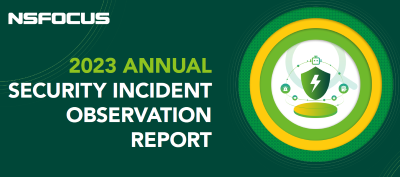
The year 2023 witnessed a dynamic and complex cybersecurity landscape, with various security incidents, vulnerabilities, and trends emerging and evolving.
Today, we released the 2023 Annual Security Incident Observation Report, based on our security incident data recorded in 2023. This report provides a summary of the security incidents, the security vulnerability information, and the cybersecurity trends observed by our researchers. The report covers the following aspects:
The overall security incident data showed a stable trend. Attacks mainly targeted the financial and telecom sectors, and data security risks in enterprises and healthcare sectors increased.
The monthly addition of vulnerabilities ranged from 2100 to 3000, exacerbating the severity of the security vulnerability landscape. High-risk vulnerabilities continued to grow. Some decade-old vulnerabilities remained active, with alert counts exceeding three hundred thousand. Zero-day vulnerability exploitation was on the rise, as threat actors enhanced their attack techniques.
The cybersecurity trends reflected the changing nature and impact of cyberattacks. Java applications and ESXi became ransomware hotspots. Malware tactics evolved and social engineering attacks remained a concern. Cybersecurity risks amid the AI wave increased, as AI-based social engineering attacks became more rampant and data leakage and misuse posed emerging risks. Automotive electrification, connectivity, and smart systems introduced more cybersecurity risks, as smart cars needed enhanced security and data protection. Cloud security awareness had to improve when Kubernetes gained prominence, as the security of the K8S cluster console and insecure container configurations became weak points in cloud security. DDoS attacks were commonly used in geopolitical cyber conflicts, and critical infrastructure was the main target of cyber warfare.
This report aims to provide some insights and guidance for security practitioners, researchers, and decision-makers to cope with the ever-changing cybersecurity landscape. To download a copy of the full report, please visit the report at the Resources of NSFOCUS website.
